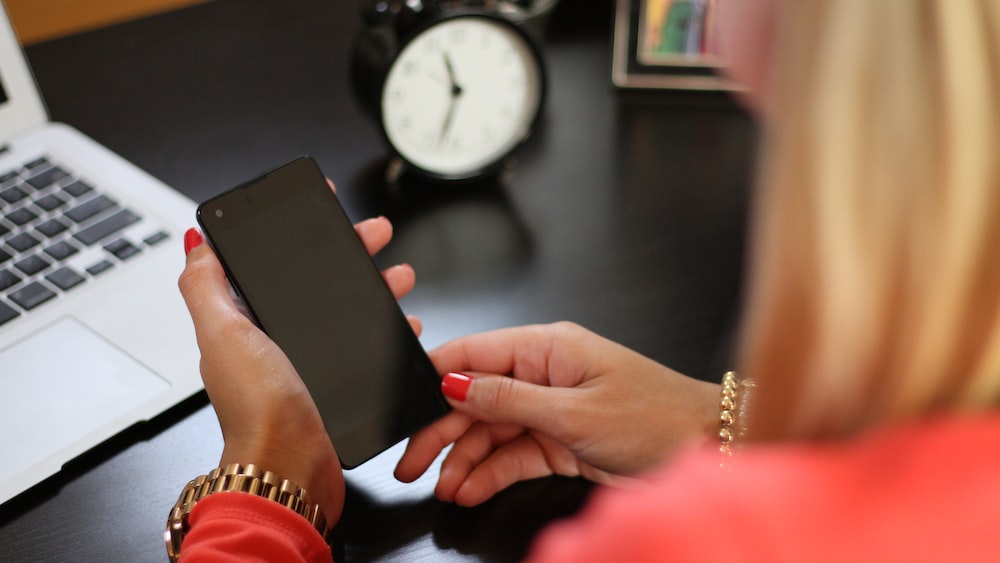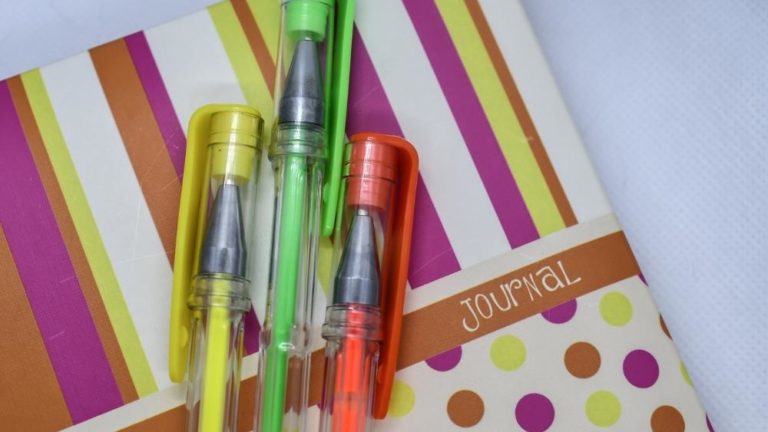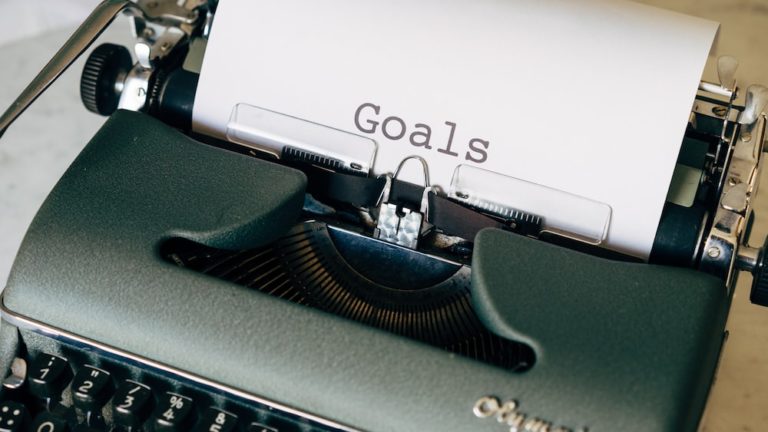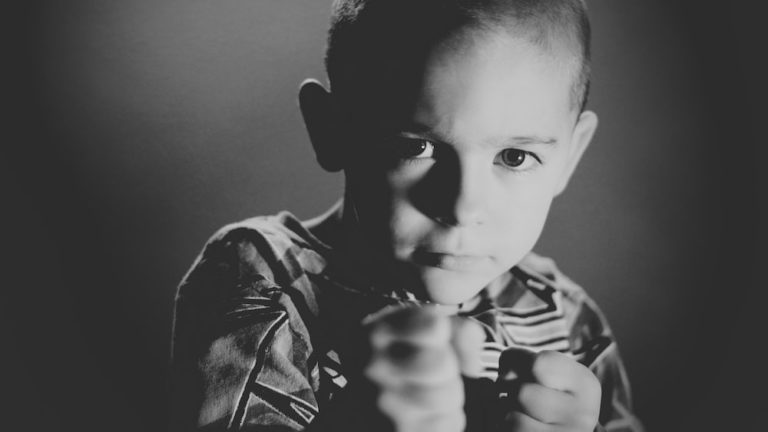Master The Art Of Active Listening In Relationships
Isn’t it funny how listening – the thing we do more than any other communication activity – is the skill we often pay the least attention to? Welcome, brave souls, on a quest for powerful self-growth and transformation! This blog post is like that proverbial yellow brick road you need to follow, leading you to a world of seamless communication. Prepare for a ride to self-improvement and bear with me while I metaphorically throw myself under the bus as we tackle the hidden art of active listening in relationships. You may ask, “Listening? The thing we do every day?” Yes, that’s the one, and oh boy, there’s much more to it than you might think!
Life has a peculiar hilarious way of keeping us perpetually off-balance, and sometimes it feels like a scene from the Alice in Wonderland tea party, where everything is cuckoo. In the chaos of mad-hatter tea parties, we tend to misconstrue what people are saying or completely miss out on the undertones and nuances. “But, I hear plenty,” I hear you say. There’s a big difference between hearing and truly listening, my friend.
The quick trick for becoming less judgmental in active listening often lies in focusing and understanding rather than hearing and responding. It’s about transforming every personal interaction, especially with your partner, into a platform for deep understanding and mutual growth. It requires one to be in the moment without darting off to tossing a judgmental jab or an impatient interjection. Active listening can become a game-changer in relationships, enhancing communication to an enigmatic echelon.
Understanding Active Listening
Before we dive head-first into the intricacies of active listening, it’s essential to set foot firmly into the puddle of understanding what exactly it is. Think of it as that wise old owl perched on the tree, silently observing, completely alert, and comprehending every tiny movement of the forest below.
What is Active Listening?
You might be picturing sitting cross-legged, chanting “OMM,” in an attempt to levitate into active listening enlightenment. Chuckles, our narrative is not diving into an astral plane just yet. Active listening in relationships is a two-part performance that involves absorbing and understanding a person’s spoken word and non-verbal cues.
The tale doesn’t end at just hearing the words – it’s like standing outside the luscious forest, marveling at it but never entering it. Active listening is an art of receiving the message, processing it, reacting, and then responding.
This sequence may sound simple, but we often jump straight to the reacting and responding phases. What happens to the processing, you might ask? Well, it often gets swept under the rug because we’re busy formulating a response. Consider active listening as a ticket to a Broadway show, where you get to play the main character and the audience, soaking in the spotlight and closely observing the minutest detail.
Active listening in relationships involves absorbing and understanding both spoken and non-verbal cues, and is a two-part performance that requires processing and reacting before responding.
The Importance of Active Listening in Relationships
Active listening in relationships is like squaring the circle of communication. The art of listening can make your partner feel valued, understood, and important, thus, acting as a glue, binding you together closer than ever.
In essence, active listening may just be the superhero our relationships need, swooping in to save the day by clearing misunderstandings and fostering a deep sense of empathy. Trust me, dear readers, there’s nothing more magical than knowing you’re truly heard and understood. It’s not just about fixing problems; it’s about building a smashing tea party where everyone knows exactly what kind of craziness is being served!
Techniques for Active Listening
After having hopped on the bus of understanding active listening, let’s move down the boulevard of mastering the techniques. There’s so much more to this discourse than just sitting quietly as someone talks – so let’s explore!
Being Fully Present
Blending superhero metaphors and life’s tea parties aside, being fully present is the secret sauce that subway won’t tell you about, but I will. Just as you wouldn’t leave the stovetop unattended while making fettuccine alfredo (the disaster, right?), active listening also requires the same level of attention. Being present while listening means you’re attentive to the other person and their words – their concerns, their queries, and their implicit messages.
It’s like turning off that constantly nagging inner monologue and dialing the focus on your partner’s words, their tone, rhythm, and the slight quiver or gleam in their voice. It’s putting your phone on silent, turning off the TV noise, and shutting out the external world to give undivided attention. This focused vigilance needs practice, a bucketful of patience, and a dash of commitment.
Paying Attention to Non-Verbal Cues
While words weave a web of insights, non-verbal cues are the spiders that scuttle around, adding depth and dimension to the understated. Whether it’s the furrowed eyebrows, the clenched fists, or the nervous tapping of the foot, they all tell a tale that words often miss.
In active listening, one needs to be as observant as Sherlock Holmes, deciphering the subliminal messages from these cues. Is there tension in their shoulders? A nervous tic in the corner of their mouth? A hesitance and avoidance of eye contact? All these can be far more expressive than the spoken word.
Remember, it’s not about turning your conversations into an FBI interrogation but about deepening your understanding. Like a detective caring about a clue, be a listener who cares about your partner’s comfort and sentiments, beyond just the words.
Non-verbal cues are like spiders scuttling around, adding depth and dimension to conversations, and being observant of them can deepen understanding beyond just the spoken word.
Maintaining Good Eye Contact
If eyes are the windows to the soul, then maintaining eye contact during a conversation is like taking a tour of the person’s emotional skyscraper. Eye contact in active listening isn’t about challenging each other to a staring contest but offering a visual cue that you’re present and tuned into the conversation.
Imagine discussing something pertinent and your listener starts admiring the grandeur of the ceiling or the intricate designs of their shoe laces. Quite the punch in the gut, isn’t it? Maintaining eye contact signals interest and engagement, implicitly saying, “I’m here with you, and what you’re saying matters to me”.
But, let’s not be creepy-stalkerish about it, okay? Try striking a balance where your gaze is aligned with your concern, showing your partner they have your undivided attention.
Asking Open-Ended Questions
Open-ended questions are the magic keys to the doors of deeper, meaningful dialogues. They’re an integral part of active listening and one of the most profound ways of showing your partner that you’re engaged in the conversation.
Do these questions involve only “what,” “how,” and “why”? Not necessarily. Any question that encourages your partner to open up, conveying their emotions and thoughts, falls into this realm. It’s not about playing the role of a cross-examining lawyer, but being the compassionate reader interested in understanding the full story, open-ended questions help in the seamless flow of communication and shows your eagerness to understand better.
And remember, asking is just half the task. The other crucial part is waiting for the answer, patiently, without interrupting, assuming, or filling in the gaps. It’s time to buckle up and delve into the fine art of conversation curating!
Reflecting What You Hear
Reflecting what you hear is the cherry on top of the active listening ice-cream sundae. It involves repeating or paraphrasing what you’ve heard to confirm and solidify your understanding. It’s like looking into a mirror and seeing your words being reflected back towards you.
Reflection allows you to address any misunderstandings or confusion immediately. It also validates the speaker’s feelings, making them feel heard, understood, and valued. It’s simple; it’s like saying, “Lemme get this straight, you’re upset because you feel I’m not spending enough time with you, right?”
Such a reflection doesn’t just clarify and confirm but makes a significant impact on the emotional climate of the conversation. Reflecting ensures that you’re on the same page with your partner, enhancing the communication quality, and fostering a deep sense of understanding.
Reflecting what you hear not only clarifies and confirms understanding but also validates the speaker’s feelings, making them feel heard, understood, and valued.
Practicing Patience
Ah, patience, that elusive virtue that we know is beneficial but sometimes find difficult to practice. One cannot emphasize enough its crucial role in active listening in relationships – an essential ingredient in the recipe for robust, clear, and impactful communication.
Practicing patience while listening means taking a step back from your urge to reply, advise, or interject. It’s the cultivated ability to let the other person speak without interrupting them with your thoughts, opinions, or solutions. It involves waiting for the person to finish before coming in with your response.
Remember, everyone has their own pace of putting their thoughts into words. For active listening, one needs to be as patient as an angler, waiting for the right time to reel in, in complete sync with the speaker’s rhythm, not forcing them to adapt to yours. Practicing patience can be challenging, especially when you’re just aching to get a word in edgeways, but trust me, it’ll do wonders for your communication.
Take it as the longest and most important drumroll before the big announcement – let it build, and respect its significance.
Withholding Judgment
Active listening is more than simply not interrupting the speaker. It’s about dropping the gavel and silencing the internal judge that’s so insistent on presiding over every dialog. Let’s be real, we’ve all been guilty of forming opinions and judgments before someone even finishes their story.
The ability to withhold judgement not only requires patience but also a willingness to open up to differing perspectives. Imagine bearing witness to the exotic allure of a foreign country; such an experience might seem alien at first but yields an enriching experience if you approach it with an open mind and heart. Similarly, when you actively restrain your prejudices and remain neutral while listening, you embrace the opportunity to learn and grow.
Let’s not forget that humans are complicated beings. And each one of us can be a magical concoction of contradictions that sometimes make little sense to anyone outside our selves. So when you’re engaged in active listening in relationships, allow others the space to narrate their own story, even if it’s akin to turning a book in the middle and trying to make sense of it.
The Role of Body Language in Active Listening
Body language stands as the unsung hero in the art of conversation. Often downplayed, it’s a decisive contributor in manifesting the magic of active listening in relationships.
The Importance of Body Language
Think of the situation when you’re talking to someone, and their eyes are glued to their phone. That stuff grates, right? Even with their ears all perked up, you’d call their listening skills into question. And you wouldn’t be wrong; body language is nearly half the story.
It’s well documented that effective communication is only 7% verbal, with body language dominating at 55%, and the rest 38% attributed to tone of voice. So, imagine you’re on a treasure hunt (of better communication of course) and you ignore the biggest piece of the map. Doesn’t sound like you’ll find any significant gold anytime soon.
Additionally, the non-verbal cues we emit – be it an encouraging nod of the head, an understanding smile, or a gentle touch – can show the other person that we are fully present and invested in the conversation.
Interpreting Your Partner’s Body Language
Cracking the coding of body language isn’t about acquiring the insight of an FBI profiler (although that sounds exciting!). It’s more about paying attention to the subtle clues that your partner leaves around like breadcrumbs in a forest.
Take for instance, the way your partner’s body angles towards you when they have something important to discuss, or how their arms cross defensively when they’re uncomfortable. Plus, the unconscious habits: the tapping of a foot, twirling of hair, or the deep sighs emitting from them like a forgotten kettle. Being receptive to these small nuances significantly enhances active listening in relationships.
However, guard against jumping to conclusions too quickly. While interpreting body language may feel like navigating through a maze at times, it’s preferable to clarifying points rather than assuming the wrong message.
Paying attention to subtle body language cues significantly enhances active listening in relationships, but it’s important to avoid jumping to conclusions too quickly.
Enhancing Communication through Active Listening
The realms of active listening in relationships can prove to be a rabbit hole of transformative experiences.
The Impact of Active Listening on Communication
There’s an old saying that, “We have two ears and one mouth, so we should listen more than we say”. Makes perfect sense when the listener plays such a pivotal role in any conversation. Did you know that good listener = compelling conversationalist? Take a moment to let that sink in.
Active listening converts the typical monologue-sort of conversation into a balanced, dynamic dialogue. It does this by promoting the sense of being understood and valued, two fundamental components of any meaningful conversation.
The sky takes on a whole different hue when active listening becomes the norm. Suddenly, conversations are no longer reduced to contests of who can belt out the most words. It’s about engaging, understanding, and using silence as your ally, not enemy.
How Active Listening Can Improve Your Relationship
Active listening affects every component of a healthy relationship; it’s like the secret spice your grandma used to magically uplift every dish.
When we actively listen, we sow the seeds of trust, understanding, and mutual respect in our relationships. It says to the other person, “Your thoughts matter,” not such a mountain to climb, but the effects are transformative.
What follows is a domino effect that touches upon the other vital components of a relationship like conflict resolution, emotional intelligence, and personal growth. So, dive into the empowering journey of active listening in relationships and watch the castle of meaningful connections unfold in front of you.
Common Barriers to Active Listening
Life ain’t no sunshine and rainbows; barriers will present themselves as you traverse on the road of active listening.
Distractions and Lack of Focus
Distractions are like those pesky pop-up ads that interrupt you when you’re engrossed in an interesting article online. They come in various forms. Physical distractions like our phones buzzing, people chattering, or even the smell of fresh coffee brewing nearby can draw us away from a conversation.

Not to forget the internal distractions; the personal version of ‘to-do’ lists, anxieties, and our own thoughts can play their part in diverting our attention. Concentration is a requisite for active listening in relationships – a more elusive butterfly to catch than we care to admit.
We often underestimate the relevance of focus and the amount of mental energy effective listening can demand. One may argue that listening might not look as flashy as talking, but it requires equal, if not more, diligence and commitment.
Personal Biases and Assumptions
It’s the elephant in the room of listening; our personal biases and assumptions. As human beings, before we step into the listener’s shoes, we’re perhaps tempted to take a walk in the judge’s robes.
There are times when we listen to reply rather than to understand. More often than not, we are preoccupied with our own subjective interpretations, as if running someone’s narrative through our personalized translator which is unapologetically influenced by our experiences, values, and beliefs.
These biases rear their head and meddle with our ability to grasp and interpret information objectively. The key to successful active listening in relationships is to consciously acknowledge and leave these biases at the door when engaging in a conversation.
To be successful at active listening in relationships, it’s important to consciously acknowledge and leave our personal biases and assumptions at the door when engaging in a conversation.
Emotional Reactions and Taking Things Personally
“Did you ever notice,” I muse, “how quickly we humans can go from a perfectly peaceful state to an emotional train wreck?” It happens with mind-boggling speed. One minute, you’re lounging on the couch, twiddling your thumbs, and the next, you’re a walking tempest! Now, imagine if that tempest decides to communicate – not pretty, eh? Emotional reactions, especially during communication, turn us into the proverbial bull in a china shop.
This doesn’t even take into account the “double whammy” effect of taking things personally. If emotional reactions are the bull, then taking things personally is like baiting it with red cloths – one after the other. Brace yourselves, fragile glassware!
Problems arise when the connection between the words and our perceptions gets skewed by our feelings and personal biases. Picture this: you’re having a conversation with a friend, who states a seemingly harmless fact. But because of your personal narrative, you magnify its significance, leading to an oversized reaction. That’s what taking things personally can do in our active listening in relationships. It can lead to misunderstandings that, left unresolved, may create unhelpful patterns and relational strife.
Overcoming Barriers to Active Listening
Overcoming barriers to active listening is like charting through a maze with blindfolds; it’s challenging, but not impossible. You simply need the right kind of tools, in this case, psychological and emotional tools, that help you navigate through the noise and distractions. The two most effective tools in our arsenal for bolstering active listening are mindfulness and empathy.
Mindfulness and Active Listening
Ironically, the act of active listening requires not just our ears, but our mind as well. Mindfulness, the practice of being present and attentive to the here-and-now, is the cornerstone of active listening skills. Imagine it as a filter that eliminates the unnecessary noise – disturbances, distractions, and your ever-chattering thoughts – while enhancing the clarity of what’s really important – the spoken words.
The second aspect of mindfulness in active listening is preventing your mind from spinning tales of its own while the other person talks. You catch a word, a phrase, an idea, and off you go on a tangential trip, far removed from the ongoing conversation. As humorous as it sounds, we’ve all been guilty of it, only to realise later that we missed important parts of the conversation.
Practicing mindfulness helps you stay tuned to the speaker’s words, expressions, and overall communication. So, the next time you’re in conversation with someone, take a moment to connect with your mindful self. Listen, not just with your ears, but with your mind.
Empathy and Active Listening
Now, let’s talk about empathy skills. If mindfulness is about being aware of your mental processes, empathy is about seeing through the eyes of the other person. Empathy is not just about understanding what the other person is saying, but why they’re saying it and how they might be feeling.
One of the key aspects where empathy supplements active listening is in understanding the emotional context of the conversation. As humans, our conversations are infused with emotions – joy, sadness, excitement, frustration, and countless others. Sometimes, these emotions are not spoken directly but are expressed through nuances, innuendos, or body language.
Empathy helps decode these hidden subtexts in conversations. When you bring empathy into play, you’re not just hearing words, you’re discerning emotions, and that can make a huge difference in the quality of your communication. So, next time, widen your perceptive lens through empathy while actively listening.
FAQs
1. What are some common mistakes people make when trying to practice active listening?
One common mistake when practicing active listening is allowing distractions, both within their mind and from their environment, to pull their attention away from the speaker.

2. How can I improve my active listening skills?
Improvement in active listening skills can come from regular mindfulness practices that help one stay in the moment and focused on the speaker.
3. How can active listening benefit my relationship?
Active listening can greatly improve the quality of conversations, leading to a deeper understanding, connection, and mutual respect in relationships.
4. What should I do if my partner doesn’t practice active listening?
If your partner is not practicing active listening, gentle suggestions and sharing helpful resources like this blog might be a good first step towards helping them understand its significance.
Conclusion
Throughout our journey of self-improvement, we might have underestimated the powers of active listening in relationships, treating it as a side-kick to the lead role of speaking. But just like Batman needs Robin, communication needs active listeners to ensure harmony and mutual understanding. So, if you’ve found insights from this article helpful, make good use of them. Incorporate mindfulness and empathy into your communication repertoire and witness the transformative effects on your relationships.
Indeed, the path to becoming a great active listener is dotted with challenges, where our emotional reactions and personal biases often play spoilsport. But remember, each step you take towards overcoming these barriers, you’re evolving as an individual and improving the quality of your connections.
So, here’s to cultivating silence and sowing seeds of understanding. Remember, my dear readers, we can talk till we’re blue in the face, but if we’re not listening, we’re not communicating – let that thought linger a bit. Cheers until next time, and remember, keep growing, stay curious, listen actively, love deeply! This is Fabian, signing off.
Share with your Friends:






